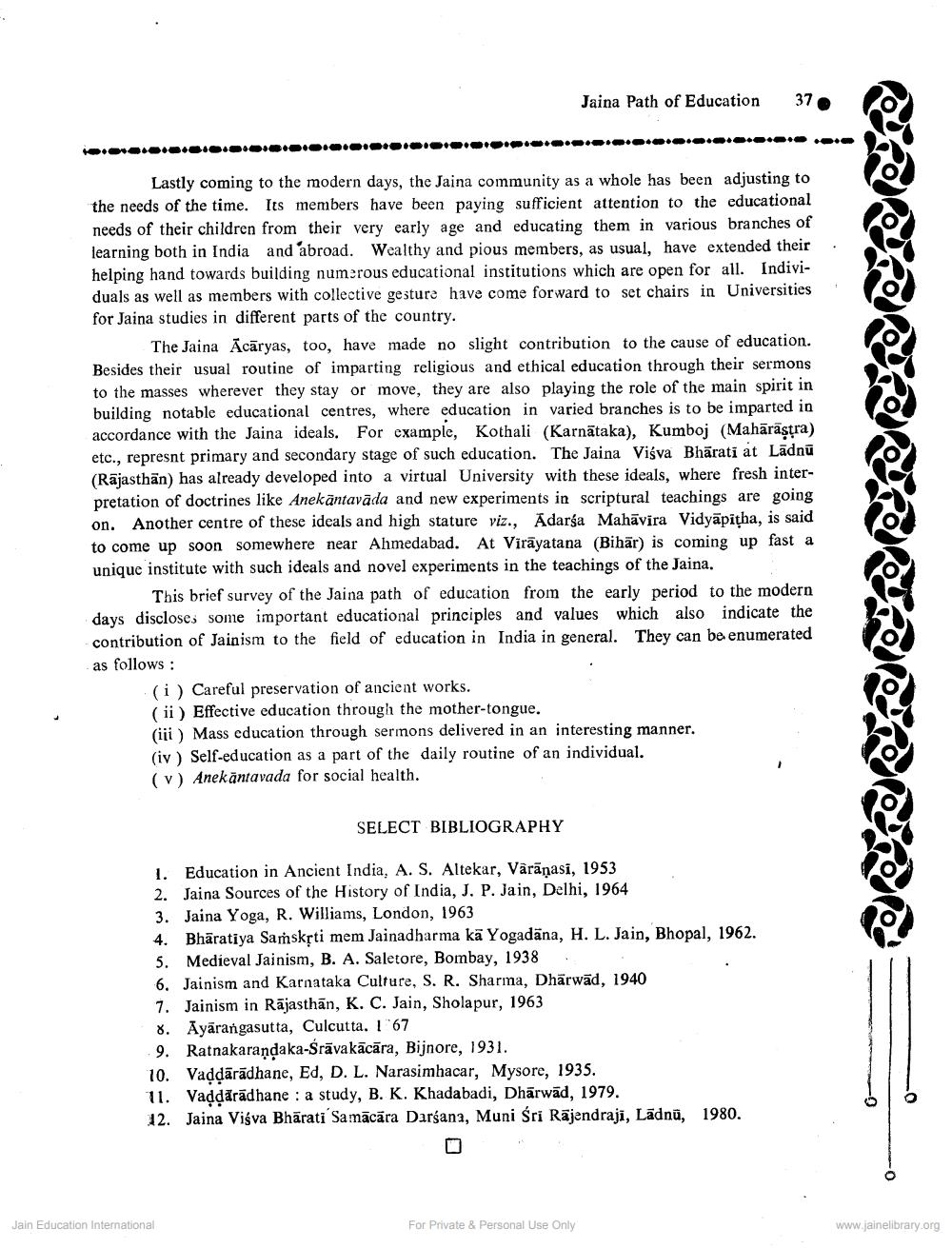________________
Lastly coming to the modern days, the Jaina community as a whole has been adjusting to the needs of the time. Its members have been paying sufficient attention to the educational needs of their children from their very early age and educating them in various branches of learning both in India and abroad. Wealthy and pious members, as usual, have extended their helping hand towards building numerous educational institutions which are open for all. Individuals as well as members with collective gesture have come forward to set chairs in Universities for Jaina studies in different parts of the country.
Jaina Path of Education
The Jaina Acaryas, too, have made no slight contribution to the cause of education. Besides their usual routine of imparting religious and ethical education through their sermons to the masses wherever they stay or move, they are also playing the role of the main spirit in building notable educational centres, where education in varied branches is to be imparted in accordance with the Jaina ideals. For example, Kothali (Karnataka), Kumboj (Maharastra) etc., represnt primary and secondary stage of such education. The Jaina Viśva Bharati at Lādnū (Rajasthan) has already developed into a virtual University with these ideals, where fresh interpretation of doctrines like Anekantavāda and new experiments in scriptural teachings are going on. Another centre of these ideals and high stature viz., Adarga Mahavira Vidyapitha, is said to come up soon somewhere near Ahmedabad. At Virayatana (Bihar) is coming up fast a unique institute with such ideals and novel experiments in the teachings of the Jaina.
This brief survey of the Jaina path of education from the early period to the modern days discloses some important educational principles and values which also indicate the contribution of Jainism to the field of education in India in general. They can be enumerated as follows:
(i) Careful preservation of ancient works.
(ii) Effective education through the mother-tongue.
(iii) Mass education through sermons delivered in an interesting manner. (iv) Self-education as a part of the daily routine of an individual. (v) Anekantavada for social health.
SELECT BIBLIOGRAPHY
1. Education in Ancient India, A. S. Altekar, Varanasi, 1953
2. Jaina Sources of the History of India, J. P. Jain, Delhi, 1964
3. Jaina Yoga, R. Williams, London, 1963
4. Bharatiya Samskṛti mem Jainadharma kā Yogadana, H. L. Jain, Bhopal, 1962.
5. Medieval Jainism, B. A. Saletore, Bombay, 1938
6. Jainism and Karnataka Culture, S. R. Sharma, Dharwad, 1940
7. Jainism in Rajasthan, K. C. Jain, Sholapur, 1963
8. Ayärangasutta, Culcutta, 167
9. Ratnakarandaka-Srävakācāra, Bijnore, 1931.
37
10. Vadḍārādhane, Ed, D. L. Narasimhacar, Mysore, 1935.
11. Vaddärädhane: a study, B. K. Khadabadi, Dharwad, 1979.
12. Jaina Viśva Bharati Samācāra Darśana, Muni Śri Rajendraji, Lädnü, 1980.
Jain Education International
For Private & Personal Use Only
Port
www.jainelibrary.org




